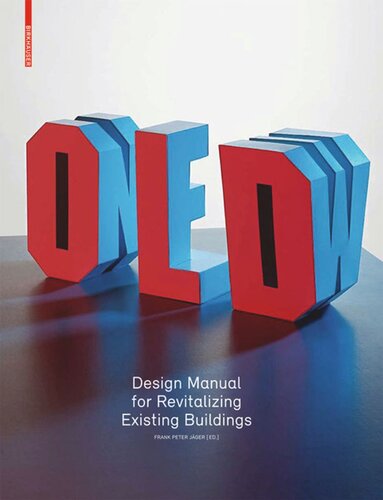

Most ebook files are in PDF format, so you can easily read them using various software such as Foxit Reader or directly on the Google Chrome browser.
Some ebook files are released by publishers in other formats such as .awz, .mobi, .epub, .fb2, etc. You may need to install specific software to read these formats on mobile/PC, such as Calibre.
Please read the tutorial at this link: https://ebookbell.com/faq
We offer FREE conversion to the popular formats you request; however, this may take some time. Therefore, right after payment, please email us, and we will try to provide the service as quickly as possible.
For some exceptional file formats or broken links (if any), please refrain from opening any disputes. Instead, email us first, and we will try to assist within a maximum of 6 hours.
EbookBell Team

4.1
10 reviewsThe old made new
Most of the buildings that will be needed in Europe in the coming decades have long since been built. The building tasks of the future lie in the skillful reuse and transformation of existing building stock, whether it be the redevelopment of historic city centers, the building of extensions onto residential structures, the expansion of public buildings, or the redevelopment of entire factory areas. Building in the existing fabric calls for highly specific approaches in planning, construction, and implementation. It spans a broad range of building tasks, from working within the guidelines of historic preservation and renovating carefully and cautiously all the way to the complete transformation of what exists. In addition to aesthetic transformation, technical aspects such as improving energy efficiency and working with contaminated building materials also play an important role.
This book provides a comprehensive overview of architectonic strategies of "continuing to build." It presents intelligent ideas and approaches for working with existing building stock and divides them into three categories according to the method selected: addition, transformation, and reuse. Presented in this volume are everyday projects such as the revitalizing of structures from the 1950s to the 1970s – for example, the renovation of Siedlung Heuried in Zurich by Adrian Streich Architekten – but also more specialized examples such as the open-air library made of elements recycled from the façade of a department store in Magdeburg-Salbke by Karo* Architekten. Interviews with experts provide helpful background information on selected topics.